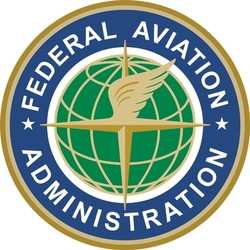Tue, Aug 26, 2014
Meetings Planned With FAA To Develop Advisory Circulars
HAI, along with the Association of Air Medical Services (AAMS) and the Air Medical Operators Association (AMOA), are continuing their work with the FAA to ensure that helicopter air ambulance operators have the information they need to comply with the helicopter safety rule issued earlier this year — often known as the HEMS rule.

The three associations are planning meetings with the agency in the coming weeks to develop advisory circulars and other guidance to help operators comply with the multi-year roll-out of the new rule.
Earlier this summer, as a result of pointed input from the three associations, the FAA issued a direct final rule and three technical corrections to the safety rule, which itself was issued in late February. The changes reflect industry’s input, and enhance safety.
The direct final rule modifies 14 CFR 135.611, a new section that was added as part of the helicopter safety rule, to allow helicopter air ambulance (HAA) pilots to “assess the weather at a departure point where current weather observations are not available and to depart if the pilot's observed ceiling and visibility is greater than certain weather minimums. This change to the current regulation will permit helicopter air ambulance flights to enter the National Airspace System under instrument flight rules (IFR) when visibilities and ceilings are below visual flight rules (VFR) based on pilot weather observations, thus increasing the safety of the flight.”
Had the FAA not taken this action, pilots would have been unable to depart IFR from landing sites without weather reporting — which would likely include most of the incident sites they would be departing from — until VFR conditions existed. It allows HAA pilots operating in low visibility to take full advantage of air traffic separation services.
In addition, the FAA made technical corrections the sections 91.155, 135.609, and 135.621.
- The change to 91.155 removes duplicative text and clarifies a table included in the section, but does not change the intent of the Final Rule.
- The change to 135.609 clarifies that weather minimums outlined in the part only apply to VFR operations.
- The change to 135.621 eases the burden for operators with regard to required briefings for medical non-flight personnel.
HAI, AAMS, and AMOA continue to have regular contact with the FAA as the agency develops the guidance necessary for HAA operators to comply with the new rules and enhance safe air ambulance operations.
More News
He Attempted To Restart The Engine Three Times. On The Third Restart Attempt, He Noticed That Flames Were Coming Out From The Right Wing Near The Fuel Cap Analysis: The pilot repor>[...]
Make Sure You NEVER Miss A New Story From Aero-News Network Do you ever feel like you never see posts from a certain person or page on Facebook or Instagram? Here’s how you c>[...]
From 2009 (YouTube Edition): Leading Air Show Performers Give Their Best Advice for Newcomers On December 6th through December 9th, the Paris Las Vegas Hotel hosted over 1,500 air >[...]
Aero Linx: NASA ASRS ASRS captures confidential reports, analyzes the resulting aviation safety data, and disseminates vital information to the aviation community. The ASRS is an i>[...]
“For our inaugural Pylon Racing Seminar in Roswell, we were thrilled to certify 60 pilots across our six closed-course pylon race classes. Not only did this year’s PRS >[...]
 NTSB Final Report: Rutan Long-EZ
NTSB Final Report: Rutan Long-EZ ANN FAQ: Turn On Post Notifications
ANN FAQ: Turn On Post Notifications Classic Aero-TV: ICAS Perspectives - Advice for New Air Show Performers
Classic Aero-TV: ICAS Perspectives - Advice for New Air Show Performers ANN's Daily Aero-Linx (06.28.25)
ANN's Daily Aero-Linx (06.28.25) Aero-News: Quote of the Day (06.28.25)
Aero-News: Quote of the Day (06.28.25)



